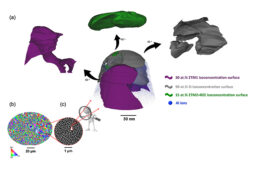
Analytical techniques seek to increase performance and power efficiency
Lithium-ion batteries are the future of renewable energy. Few know this better than CAMECA, a business unit of AMETEK and a global leader in elemental and isotopic microanalysis. A four-time R&D 100 Awards recipient, CAMECA provides transformational characterization technology for lithium-ion (Li-ion) batteries.
CAMECA is a market leader in the analytical techniques of Secondary Ion Mass Spectrometry (SIMS) and Atom Probe Tomography (APT). These techniques have important applications in battery R&D.
Lithium-ion batteries continue to drop in production cost and increase in efficacy. Discover how SIMS and APT can help you develop batteries that will last longer, charge faster, and provide increased storage capacity.
Jesse Olson, Division Vice President and Business Unit Manager at CAMECA, Madison, WI, answers these important questions in this technical article:
- How do lithium-ion batteries work and where are they used?
- What are its key advantages and disadvantages?
- What is secondary ion mass spectrometry?
- How is SIMS used in Li-ion battery applications?
- Is nanoscale secondary ion mass spectrometry (NanoSIMS) similar to SIMS?
- What is atom probe tomography?
- How is APT used in Li-ion battery applications?
- What’s next?
Register below to download and read the complete technical article and learn why R&D is a major factor driving the rechargeable battery market, particularly as demand for energy storage systems and electric vehicles accelerates in today’s renewable-fueled world.
Sponsored content by CAMECA





R&D World releases relevant scientific details connected with materials and substances that are used to enhance the existence and livelihood of man on this universe.